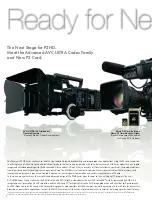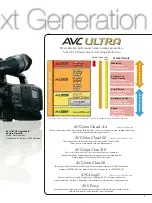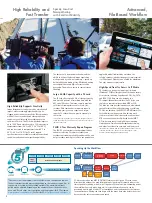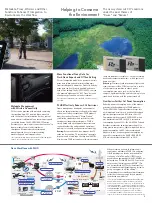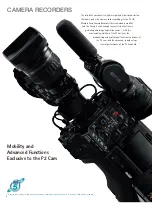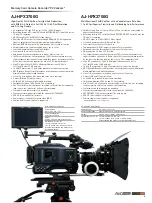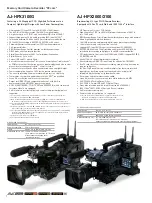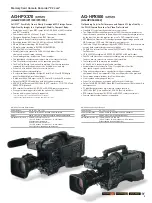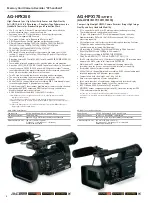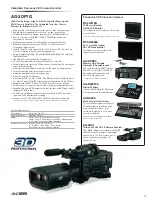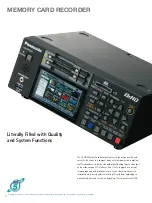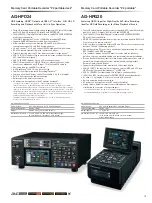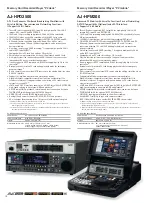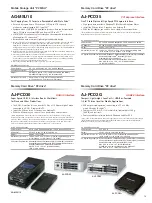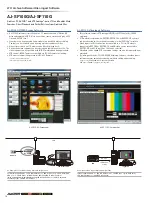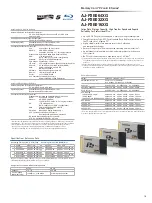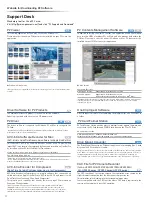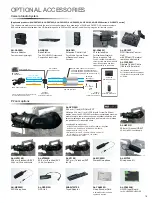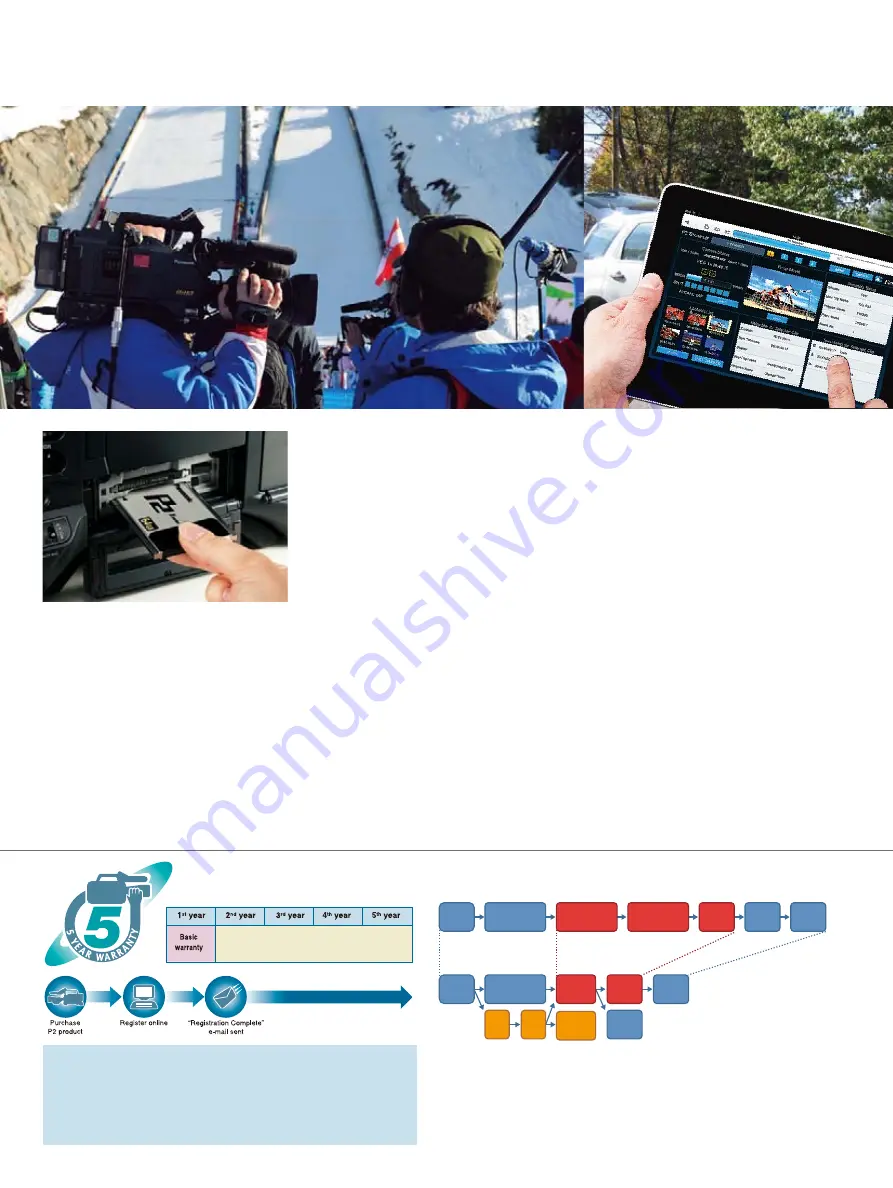
3
Shooting
Recording
Shooting
Recording
(Data Transfer)
Direct
Editing
Flash News
On-Air
Proxy
Editing
Proxy
IP
Transfer
Data Injest
(Digitizing)
Editing
Exporting
On-Air
Archive
Exporting
Archive
On-Air
(P2 deck
Writing)
The Conventional Work Flow
High Speed P2HD Work Flow
High Reliability Supports Creativity
Image disturbances can be caused by vibration and
impact, while recording/playback heads can be
clogged by dust and other particles. These problems,
which often occur under harsh video production
conditions, are eliminated by recording onto the
solid-state P2 card. The P2 card withstands impacts
up to 1,500 G and vibrations up to 15 G, operates in
temperatures from -20°C to 60°C (-4°F to 140°F),
and can be stored in temperatures from -40°C to
80°C (-40°F to 176°F). The P2 card's rugged
specifications ensure reliable recordings under harsh
conditions and enhance newsgathering mobility.
The absence of a transport mechanism and the
ability to achieve file-based image acquisition —
made possible by solid-state memory — speed up
both mobility and media access. Mistakenly writing
over valuable data and A/B-roll errors are also
prevented. This makes it easier to concentrate on
shooting.
Large 64 GB Capacity with a P2 card
The P2 card offers up to 64 GB of storage capacity,
and up to 64 minutes of recording time with the
AVC-Intra100 codec. This large capacity provides
sufficient recording time even for a two-slot-
recorder. With semiconductor memory capacity
increasing yearly, you can expect even larger-
capacity P2 cards with even greater economy in
the future.
* Total card capacity includes space for data management, such as
system data; therefore, actual usable area is less than the capacity
indicated on the card.
P2HD 5 Year Warranty Repair Program
The P2HD 5 year warranty repair program further
enhances selecting P2 camera recorder's and
recorder's outstanding reliability and durability, and
helps to reduce running costs. Once you purchase an
applicable model (indicated by a mark on the
catalog's product introduction pages), simply register
it at Panasonic's Website to be eligible for maximum
five year warranty repair service.
High-Speed Transfer, Access to IT Media
P2 content can be directly input to a file-based
(Windows® PC/Mac) image system* through a variety
of interfaces, including SuperSpeed USB 3.0, e-SATA,
and IEEE 1394. Data can also be input to a
P2-compatible nonlinear editor via a P2 drive, and
copied to a commercially available HDD or SSD.
The data can then be transferred over a network and
shared for smooth on-air broadcasting or archiving.
P2 files are based on the MXF (OP-ATOM) format, for
fast and direct editing access. And editing work
starts much faster than it does with a conventional
VTR or even with another file-based device (MXF
OP1a), because there is no digitizing or ingesting
time required. Simultaneous background archiving
and other functions also save time and lower costs.
*The PC must be installed with the P2 driver (downloadable for free) in
order to mount P2 cards. Refer to "Service and Support" on the
Panasonic Website (http://pro-av.panasonic.net/).
High Reliability and
Fast Transfer
Speedy, Low-Cost
Newsgathering
with Excellent Mobility
Advanced,
File-Based Workflow
Speeding Up the Workflow
5 Years of Warranty Repairs
Extended warranty repair
*Please note that this program is not available in some countries and regions.
The basic warranty period may vary depending on the country or region. Not all
repair work is covered by this extended warranty. The maximum warranty
period may be adjusted depending on the number of hours the devices have
been used. Details about user registration and the program: For US Customers;
www.panasonic.com/broadcast
, For Outside US;
http://panasonic.biz/sav/pass_e
P2 files are based on the MXF (OP-ATOM) format, so the files on P2 cards can be
directly edited without the need for digitizing or ingesting. This greatly reduces the
time required for editing, which in itself is generally the most time-consuming part of
the workflow. Low-rate proxy data, which is recorded simultaneously, can be
previewed on-site with a tablet PC or smartphone, and transferred over the Internet
for newsflash use. Editing can then begin with the proxy data even before the actual
data arrives for extra convenience and speed.


